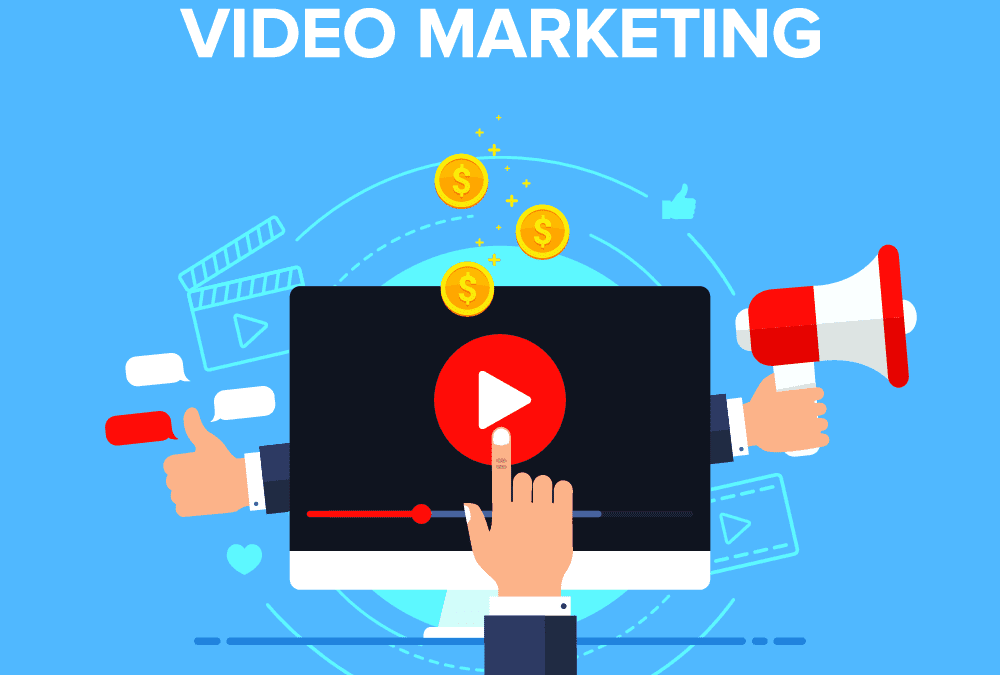
Making goals is an essential step on your way to success, whether you’ve been creating videos for your company for years or are just getting started. Having video goals from the beginning will help you in every step of the way, just as in every other aspect of your marketing strategy.
The purpose of this post is to help you set goals for your video marketing strategy. We will examine the different stages of the customer journey. We will also look at how to set SMART goals to boost your success.
CLIENT JOURNEY
A customer journey, or buyer’s journey as it is sometimes called, is the path to purchase. It consists of three stages: awareness, consideration, and decision.
If you’re making videos for marketing, you’ll want to make sure they support one of these three stages or goals in the customer journey. When you’re deciding what kind of video you’ll make, you should think about which of these three stages your video will fit into.
√. AWARENESS
A problem that requires a solution is detected during the awareness stage of the customer journey. Therefore, this cohort of prospective customers is very wide, since they may not even know they need your product or service. Videos in this stage should be highly educational and informative, specifically aimed at those who are at the beginning stages of research and are trying to gain as much information as possible to solve their problem. Videos that introduce your brand to your audience will also fit well in this stage.
√. CONSIDERATION
The consideration stage occurs when viewers consider your product or service. These viewers will be considerably more interested in the benefits that your company can provide. Since viewers in this stage are more knowledgeable about what they’re seeking and how they can fix it, you should provide more detailed information to address their needs. Videos like product reviews, platform overviews, or webinars will be able to fulfill their needs.
√. DECISION
When a customer is ready to purchase, video can serve as a way of demonstrating customer satisfaction. Customer testimonials and video case studies are great ways to show how your product will benefit them over your competitors.
√. RETENTION
A video that benefits retention is one that helps your customers throughout their use of your product or service. After a conversion, we call this the retention stage; this is an add-on stage following conversion. Using content that informs them about product updates, live streams that further explain the platform, or any number of other ideas, you will keep your customers engaged.
You need to understand what stage you’re trying to address with your video before you can set great objectives for your video marketing. Below, we’ll cover how to use SMART goals to accomplish your video goals.
SMART VIDEO GOALS
SMART is an acronym that represents a method for setting goals. Since its invention in the 1980s, this method of goal setting has been used by businesses and individuals alike for many different reasons.
Over time, the letters have changed slightly but the most popular grouping is specific, measurable, achievable, relevant, and time-related. Below, we’ll cover each of these points more in depth and show examples of how to apply them to your videos. These points will lead you to create goals that keep your videos on the right path to reaching your viewers at the right time.
DISTINCT
The first step to setting up your goal is to decide what your specific objective is. A lot of times, businesses create videos just for the sake of making them. It’s vital to consider why the video is created and what its objective is.
Instead of saying, “We must create a video”, you should say, “We must create a video that introduces our brand new feature to our target audience.” The more specific your goal, the easier it will be to determine the success of the video.
MEASURABLE
Once you have the “S” agreed upon, you should move on to quantifying your video goals. Adding some sort of measurable element to your goal will help you monitor progress and effectiveness. For instance, do you want your audience to sign up for a newsletter or free trial?
If so, how many subscribers do you wish to add? Taking these ways of measuring into consideration is a great way to measure the success of your video.
RECEIVABLE
As you think about a quantifiable goal, it is essential to keep yourself and your team grounded by ensuring whatever you choose is feasible. It may be appealing to dream of your video going viral and grabbing thousands of eyeballs and gaining well over a million subscribers, but that’s not realistic. You also don’t want to choose a goal that is too small to be a challenge.
It’s important not to undersell yourself and choose a goal that is so small that it doesn’t even pose a challenge. Instead, use past data, information from similar campaigns, and industry standards to determine a goal that will hit right at the sweet spot between challenging and achievable.
Understanding your constraints is just as important as setting a goal. For example, similar to dreaming that your video will go viral, if you become ambitious and think the video will be a blockbuster movie, but you only have a budget for a smartphone, you’ll likely be disappointed. Considering all these factors from the beginning is important: budget, labor, equipment, and so on.
RELEVANT
Relevant aspect of your goal is related to the content itself. Does what you’re trying to pitch make sense to your target audience? This can be difficult because there are so many creative ways to convey your message via video. Your message can be communicated using emotion, aesthetically pleasing elements, metaphors, and more.
To create an effective video, it’s important to keep in mind that you’re creating it so that your audience takes action, which means focusing on what resonates with them and not what excites you.
Is it really necessary to have flashy special effects or to rent a castle for your shoot location? In some cases, yes … definitely it can help to communicate your message, but you should always assess this on a case-by-case basis to ensure that it is relevant to your goal.
DURATION-RELATED
As a last step, you should give yourself a due date. This may sound obvious, but it is all too often overlooked because it is so simple. For video projects, there are two due dates: creating your video content, and connecting its measurable results to a timeframe.
In terms of video creation, you’ll need to assess the bandwidth of your team if you’re doing it in-house. For example, if your team is small and juggling many tasks, it will be unrealistic to expect them to create a final video within 48 hours.
If you have a 10-person crew dedicated to the job, you might be able to meet that deadline.
As videos can technically live on the internet forever, it is particularly important to set a deadline for when you hope to achieve your measurable objective. This will help set expectations for how your campaign will perform.
VIDEO GOAL EXAMPLE
Our goal is to increase customer awareness and attract new customers. We plan to accomplish this with a video series that demonstrates how to create better video content.




